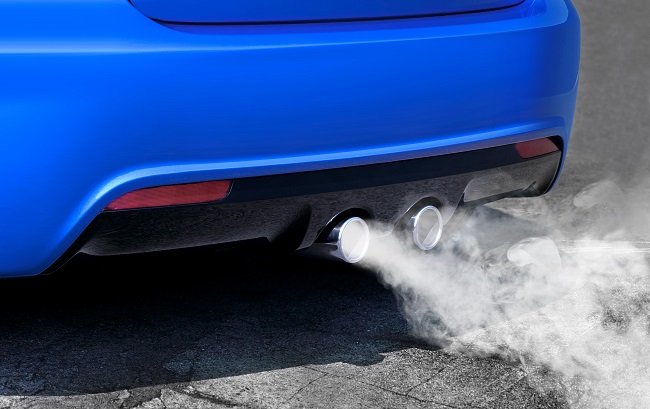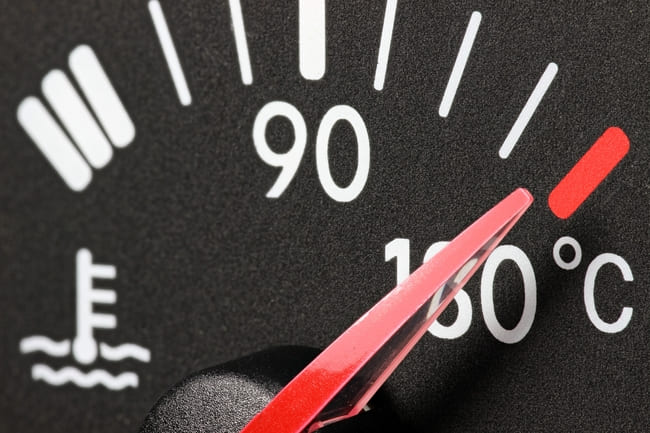
Your cylinder head gasket sits between the actual engine block and the cylinder head. As the name suggests, this ensures a tight connection between these two central engine components. Even if the name suggests it, your cylinder head gasket is generally not a classic wearing part. In the event of leaks, there are often a whole range of different signs of a broken cylinder head gasket. In the following article we want to explain exactly what these are and how you can rule out other problems.
Contents
- 1 Why should you act immediately if there is a cylinder-head-gasket defect?
- 2 What are the causes of your cylinder head gasket's defect?
- 3 How can a defect in the cylinder-head gasket be recognized?
- 4 What can happen if you don't recognize a head gasket failure in time?
- 5 What costs do you have to expect for a cylinder-head gasket replacement?
Why should you act immediately if there is a cylinder-head-gasket defect?

There is damage to your vehicle that you should always repair or have repaired immediately. A leak in your cylinder head gasket also belongs on the corresponding list. This is because it not only fulfills an essential task, but that particularly expensive consequential damage can also occur very quickly if you do not take the symptoms of a defective cylinder head gasket seriously. Problems with this component often lead to overheating of the entire engine or the cylinder head, which in turn can lead to deformation. This can lead to even more leaks, making the problem even worse. Ultimately, such deformations also make repairs more difficult. For example, if the mechanic does not measure the cylinder head and the engine block before installing a replacement gasket, unevenness is quickly overlooked and unintentional leaks remain even after the gasket has been replaced. For this reason, such repairs should only be carried out by very experienced specialists.
What are the causes of your cylinder head gasket's defect?
In principle, a component of this type can last the life of your engine. This also means that the cylinder head gasket is not a wearing part and does not have to be replaced at regular intervals. Nevertheless, damage to the material of your cylinder head gasket can occur. But how? In general, it can be said that such damage is usually caused by high temperatures. For example, if the thermostat is defective or if the water pump fails, your engine block can quickly overheat. Therefore, if the cooling water temperature rises extremely, you should stop and stop driving. Such thermal overloads can also be caused by a lack of cooling water, a fan failure, leaks in the cooling system, insufficient antifreeze or unsuitable working fluids. A long engine service life is also high on the list of causes for defective cylinder head gaskets. You should therefore drive your car regularly to prevent this from happening.
How can a defect in the cylinder-head gasket be recognized?
If you test your cylinder head gasket, you will often see oil loss in the area of the cylinder head gasket if there are any leaks. In addition, oil residues in your cooling circuit are in many cases due to a leak in this area. Not only engine oil can get into the cooling circuit, but also cooling water into the engine lubrication system. This is easy to recognize: Unscrew the caps of the corresponding expansion tanks in your engine compartment. In the case of engine oil, a light foam on the oil cover indicates that cooling water has penetrated. In addition, there are sometimes easily recognizable water droplets on the corresponding dipstick.
However, these symptoms do not necessarily have to occur at the beginning of a defect. The cylinder head gasket also seals the various combustion chambers from one another. A defect in your cylinder head gasket in this area cannot be seen from the outside. You should therefore pay particular attention to the early warning signs of such a component defect. A constant loss of cooling water from the system can thereby be caused. In addition, under certain circumstances exhaust gases, which should actually be discharged to the outside via the exhaust system, also penetrate into the cooling system. This can even go so far that the cooling system pressure increases significantly. If the engine temperature increases unusually quickly, this can also indicate a cylinder head gasket failure. If you start your engine and you see white smoke coming out of your exhaust, you should check that your head gasket is still intact.

At this point at the latest, you should consult an expert. It may well be that serious engine damage will soon occur if you simply ignore this symptom.
What can happen if you don't recognize a head gasket failure in time?
The very advanced symptoms of a head gasket leak include the emission of dark smoke when you start your engine and poor starting of your vehicle engine. In many cases, the engine temperature also rises so quickly that the coolant temperature gauge reaches the red zone after just a few minutes on the road.

In such a case, do not drive any further! This is the only way you can still prevent expensive consequential damage due to deformations caused by engine overheating. This damage often affects not only nearby units, but also the cylinder head gasket and the engine block. This can lead to irreparable damage within a very short time. In such a case, the components mentioned must be completely replaced in most cases. This often represents a total economic loss for your vehicle. In addition to the symptoms of a blown cylinder head gasket described above, there are some more general signs that can be associated with a failure of this component. This includes, for example, reduced engine performance, but also uneven engine operation.
What costs do you have to expect for a cylinder-head gasket replacement?
In contrast to other minor work on your vehicle, the costs for replacing your cylinder head gasket can hardly be quantified as a flat rate. This is because vehicle engines are becoming more and more complex and distinct from each other. As a rough guide, however, you can count on a budget of five hundred to two exchangeable euros. However, this only applies if neither the engine block nor the cylinder head have been deformed. If this is the case, the repair costs to be paid increase significantly. In addition to the labor costs, which we have already roughly estimated, there are also the actual material costs, which are usually less high in this type of work. If you have your cylinder head gasket renewed, it may be a good idea to have additional work done as well, because the many additional and wear parts have to be dismantled and reinstalled anyway. So you only have to pay the additional material costs for their replacement. This applies to the toothed belt, for example. In addition, it may also be worthwhile having an engine flushed to extend engine life.
Conclusion
You should never ignore the symptoms of a defective cylinder head gasket to avoid serious engine damage. Even if a particular symptom is not specific to a leaking cylinder head gasket, other important vehicle systems can also be affected. After checking your cylinder head gasket, it is worth checking it as well. If your vehicle has an oil loss, we will explain to you here why your car is losing oil. In this article you have learned how to identify a defective cylinder head gasket, which you should have replaced immediately in a specialist workshop with the appropriate experience.
A tip from CarTipsandmore: Replacing the cylinder head gasket can incur high costs in modern vehicles. This is mainly due to their installation position. First of all, the technically experienced mechanics have to dismantle many other units in order to be able to access this component at all. Afterwards, it must also be ensured that no overheating has led to a deformation of the actual cylinder head. If this is the case, the cylinder head must be additionally planned in order to be able to restore a tight seal. Alternatives are sealants for the cylinder head gasket, although drivers have had different experiences with it: In other words, it can work, but there is no (especially permanent) guarantee of success. Therefore, always seek comprehensive advice from a specialist workshop you trust before ordering a repair.
